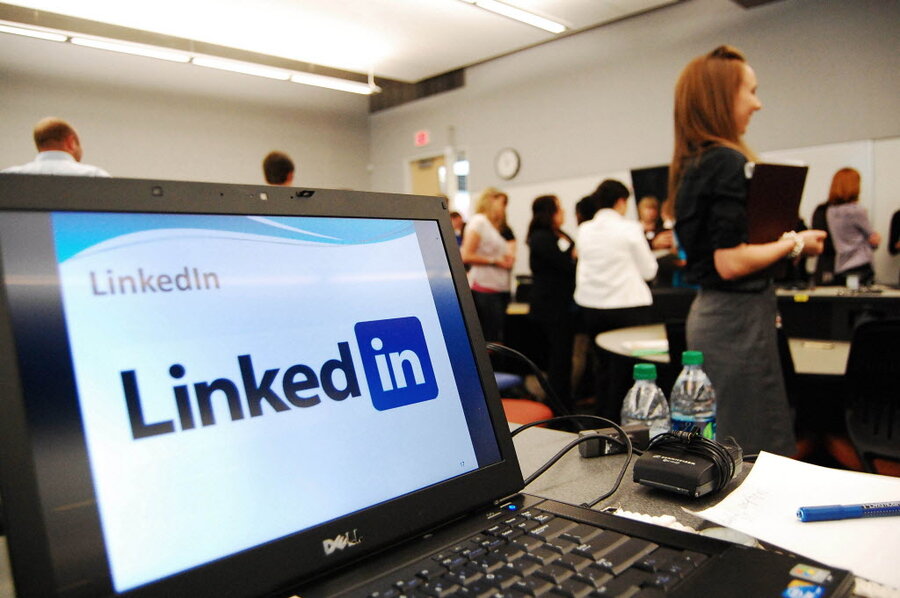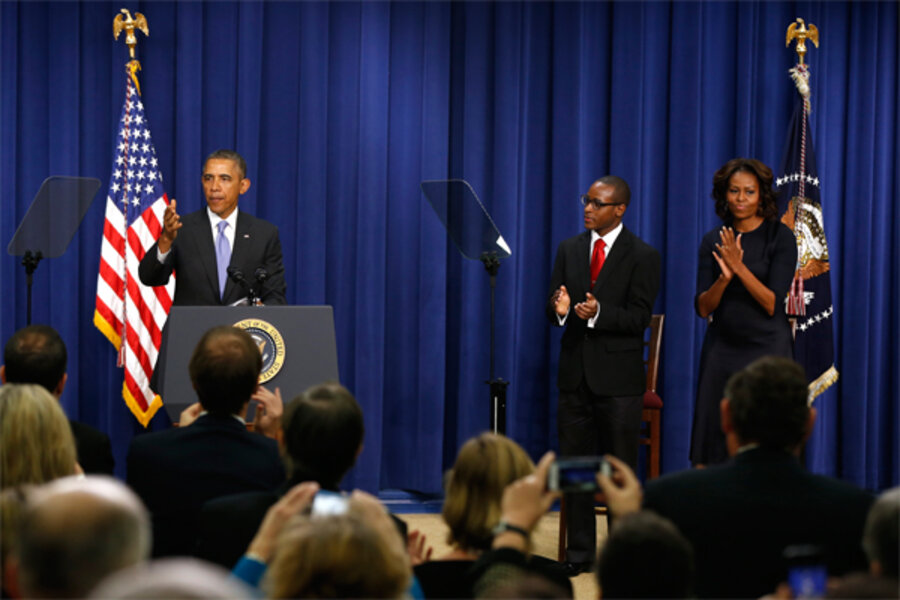How LinkedIn, Twitter, and Facebook changed college admissions
Loading...
When Rutha Nuguse went to apply for colleges, she found a way to chat with admissions counselors beyond a typical college visit – she connected with them on LinkedIn.
“I used university pages to contact admissions staff,” she says. “You can find so much information on there. Sometimes you don’t even have to go to the actual university websites … you can contact the exact person you need.”
Today students are tweeting, connecting, and Flickr-ing their way into college acceptance e-mails (complete with a YouTube video welcome). Web-first admissions also have an unexpected benefit for a highly sought group of students – underprivileged students in need of guidance through the complicated process.
Now a college freshman at the University of Washington, Ms. Nuguse first joined LinkedIn between her junior and senior years of high school while interning at Microsoft. She says she still spends time every day posting news articles, perusing various networks, and connecting with new contacts that could help her further a career in business.
Though LinkedIn has always featured schools on its networking website, it recently dropped the entry age to 14, and revamped its university pages in order to meet the needs of more motivated and social-media savvy college applicants.
“We were seeing that students and recent graduates are LinkedIn’s fastest growing demographics,” says Josh Clemm, engineering manager at LinkedIn. “We wanted to encourage students to start thinking about their career earlier on. LinkedIn is not just for people with careers already in their jobs. We wanted them to be able to think about their career at any starting point.”
He points out that colleges can have a major effect on careers later on, especially in regard to alumni networks (which feature prominently on LinkedIn’s redesigned university pages). For example, a recent study by the Federal Reserve Bank of New York of a large company found once applicants got to the interview stage, referred candidates were 40 percent more likely to be hired.
This isn’t news to high school students, which has left colleges searching for ways to connect with an increasingly connected generation.
“This is the first year I had a prospective student reach out to me to connect on LinkedIn,” says Jeff Schiffman, senior associate director of admissions at Tulane University.
Mr. Schiffman says he has increasingly seen students use social media, tech, and websites to color an otherwise black and white (literally) application. The passions that they follow on their own online time can actually give them a leg up in admissions: Some mention popular Tumblr fashion blogs that they manage, link to Flickr accounts, or include a #Tulane tweet in a college essay.
Schiffman also warns that students should be wary of what they post online, as admissions counselors are checking.
“If you ever think even one second, 'Should I be doing this?' then it's definitely not worth it,” he says.
Inappropriate tweets aside, universities face increasing pressure to reach beyond elite students tapping away on tablets between extracurricular activities, to underprivileged students – on Wednesday, President Obama hosted a conference with over 80 college presidents on the topic of college affordability. But low-income students sometimes don’t have access to the technology necessary to network, let alone get in, to some colleges.
Chris Mitchell works with high school students at College Possible, a Minneapolis-based nonprofit that counsels low-income and first generation college students in their journey to college. He says that often a snazzy website or YouTube greeting isn’t enough to bring a prospective student facing a variety of challenges from home to campus.
“Many are first-generation college students who may not have the support of someone who has gone through that [application] process,” says Mr. Mitchell. “Certainly there are financial barriers. Our students come from low-income backgrounds, and college can be a very expensive investment.”
And he says that, when combined, the cost of college and the complicated application process can sneak up even on motivated students. Unexpected fees and steps can come up in the process. The key is having a guide, often found in volunteers and tutors such as those at College Possible, but increasingly, Mitchell says, he has found websites are stepping in and guiding the process for students that otherwise wouldn’t have anyone helping out.
“There is so much information out there, “ Mitchell says. “You go to a big scholarship database – how do you know which one will be the best fit for you or best use of your time? These websites weigh how long the application will take, how much money, and the pool they are up against. They point to [the colleges] that are the best use of your time.”
One example he pointed out was College Greenlight, run by the scholarship website Cappex. This site lets students combine their top college picks into one comparison database that combines deadlines, financial aid, and scholarships, sort of like a virtual college counselor. He also has been impressed with social media outreach at schools such as Lawrence University in Wisconsin that lets prospective students interact with current students via its Facebook page.
If students are planning on using the Web as a guide or admission resource, Nuguse says that it isn’t tough for students to quickly start networking on sites such as LinkedIn. She says even students who have not yet joined many activities can add volunteer work, an extended summary that talks about their interests, and a headline that describes who they are. (Nuguse’s is currently: “Active Listener, Communicator, Undergraduate Student at the University of Washington.”)
“Share some articles, join some groups, and connect with everyone because you never know when you’re going to need someone,” she says. “Just being on there, [you see] so much information shared.”







